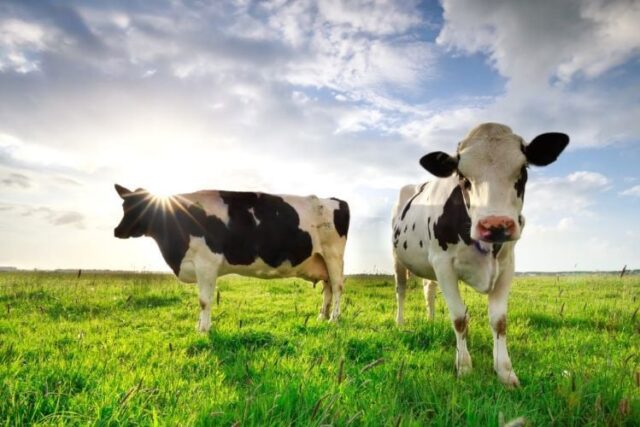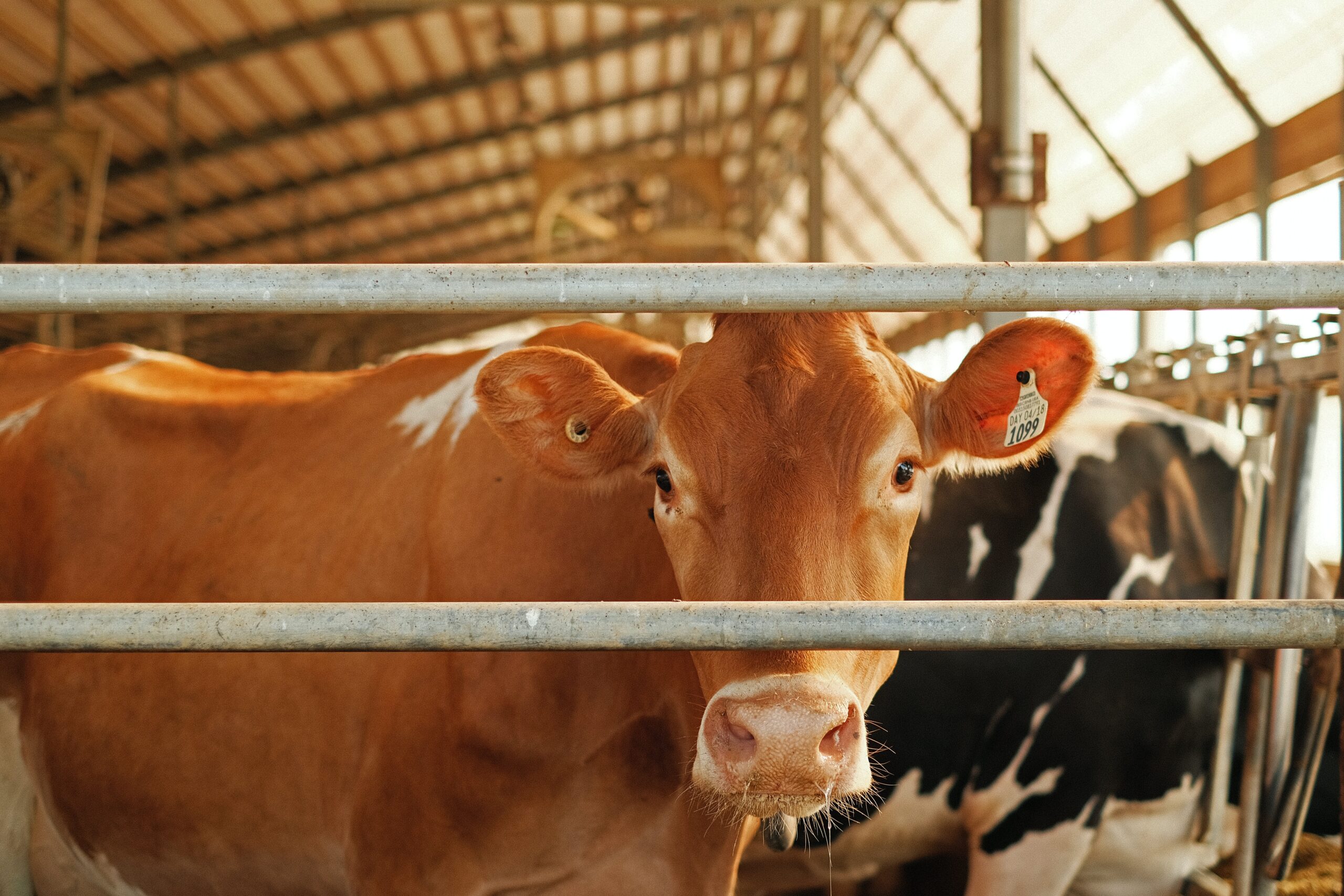
Nutritional Waysto Tackling Heat Stress in Dairy Animals
Introduction
India is endowed with livestock mega-biodiversity contributing to about one third of total agricultural gross value added. Meeting the surging future exigency for livestock-source foods including dairy requires sustainable farming practices. Among the prevailing challenges threatening livestock (feed/forage crisis, emerging diseases, poor productivity, etc.), the environmental stress particularly “heat stress” has also been identified as a potential constraintfor the sustainability of livestock sector. Given the fact that “climate change” is an ongoing reality and by the year 2100, the global surface temperature is predicted to increase by 1.8-4 °C, which implies that livestock production has to adapt to the adverse effects caused by the heat stress. As a matter of fact, consequent toEl Niño in 2024, India has experienced severe heat waves, negatively affecting the health of animals and humans.
The tropical Indian zebu breeds (e.g., Sahiwal,Gir, Tharparkar etc.) are inherently less susceptible than their European counterparts (humpless cattle) for heat stress. Dairy production statisticsreports that, lately, about 32% of total milk production in India is attributed to crossbred/exotic cows. Furthermore, the recently concluded PDFA milking competition at Punjab as well as Dairy Mela at NDRI, Karnal have showcased the Holstein-Friesian champion cows yielding as much as over 80 kg of milk a day. These cows with exotic germplasm are more proned for thermalstress.The prolonged heat stress —due to the combination of high temperature and humidity—not only affects production(milk yield and composition), reproduction (anoestrus and low conception) and health (oxidative stress and compromised immunity), but also greatly affects welfare of cows. In this way, heat stress causes low milk realisation and directly impact farm bottom-line.
Whereas the general management measures such as providing shade, sprinkling water etc. are widely practiced, some of the important nutrition-related strategies could also be applied as ameliorative measures against heat stress. In this backdrop, the present article demystifies nutrition-centric options to tackle heat stress in dairy animals.
1. General feeding management
- Offer feed during cool hours of the day i.e., early morning and evening to encourage voluntary intake.
- Avoid feeding diets rich in straws and stovers, which are fibrous and generate more heat increment during their ruminal fermentative digestion.
- Along with easily digestible forages, consider including ingredients that provide digestible neutral detergent fibre like sugar beet pulp haylage etc. This, in turn, helps maintain milk composition during summer months.
- Frequent push-up of farm-prepared total mixed ration is suggested to avoid secondary fermentation (heating-up) within manger.
- Always ensure free access to adequate cool drinking water. Depending on the severity of stress, water intake may increase 2-3 times or even more than the normal.
2. Enhancing nutrient density of diet
- A reduced dry matter intake (DMI; by 10% or more) as an adaptive response to heat stress decreases overall nutrient intake by cows, resulting in a reduced nutrient availability including retention of micronutrients.
- Increase in nutrient (energy) density of diet to cope-with the reduced DMI as well as increased energy requirement by cows to dissipate excess heat entails use of fat-rich ingredients like oilseeds like whole cottonseed, full-fat soybean etc. as fats provide over twice the energy than other nutrients.
- Use of bypass (rumen-protected) fat (calcium soaps with 84% and triglyceride/fatty acids with 99% fat) at 1-2% is an ideal option to increase net energy of lactation, keeping the total fat to not >6% of diet dry matter.
- Consider replacing protein sources with high rumen degradability with bypass protein.
- Use of better bioavailable organic/chelated trace minerals like glycinates, methionates, proteinates, propionates etc. are beneficial.
3. Rumen buffers
- Heat stress-responsive behaviour of cows i.e., panting and drooling result in the loss of saliva as well as bicarbonate ions in it, which otherwise would normally help in buffering the rumen fluid.
- It’s estimated that about 200 L of saliva is equivalent to 2000 g/day of sodium bicarbonate, signifying the potential of saliva as an inherent rumen buffer.
- In the absence of adequate rumen buffering mechanisms, the ratio of volatile fatty acids gets affected and increased concentration of lactic acid further lowers rumen pH from 6.6-6.9 to 5.8 or below,exacerbating complications such as sub-acute ruminal acidosis, which has far-reaching negative consequences on farm profitability.
- It’s recommended to feed rumen buffer like sodium bicarbonate and alkaliniser magnesium oxide in 3:1 ratio for effective rumen conditioning. Alternatively, potassium carbonateand other related salts can also be used.
- Depending on the dietary (corn silage-based ration etc.) and animal factors, buffers may be included at 0.6-0.8% of ruminant ration.
4. Electrolytes
- Heat stress causes loss of electrolytes through sweating and hence, it’s necessary to replenish their levels through extraneous supplementation.
- The recommended levels for sodium, potassium and magnesium are 0.4-0.6%, 1.5-1.6% and 0.35-0.4%, respectively in the summer diets of cows.
- Electrolytes can either be included in the concentrate mixture or offered directly along with drinking water to cows.
- Alternatively, fresh lemon juice, vitamin C (ascorbic acid) powder, salt (NaCl) and jaggery are also found effective.
5. Yeast
- Saccharomyces cerevisiae yeasts as direct-fed microbials (live, active dry or metabolites etc.) are useful in summer as these are known to increase voluntary intake, improve rumen fermentation/buffering (oxygen scavenging) and thus possibly influence nutrient digestibility.
- Increase in DMI could translate to an increased milk revenue of farm as every kg DMI is associated with a corresponding milk volume of 1.2-1.7 kg and 0.7-0.9 kg in cows and buffaloes, respectively.
- Improvements in manure (dung) score along with some advantages on milk composition could be evident on feeding 40-60 billion CFU live yeast/cow a day.
6. Other feed supplements/micronutrients
Some other micronutrient supplements that are proven to safeguard cows from the adversity of heat stress are niacin, betaine, chromium propionate, exogenous fibrolytic enzymes, antioxidant nutrients (vitamins, minerals, astaxanthin etc.), gamma-aminobutyric acid, melatonin and some herbal supplements.
Conclusion
Since heat stress adversely affects vital physiological functions and behaviour of dairy cows, it’s utmost vital to protect them from the adverse effects. In addition to general management tools, the various dietary strategiesas discussed above are useful to increase tolerance of dairy cows to scorching heat to a great extent. By incorporating these strategies, dairy producers couldable to sustain productivity under the conditions of heat stress, thus ensuring farm sustainability.

Aman Singh1 andM.S. Mahesh2
1Internee of BVSc & AH
2Assistant Professor (Animal Nutrition), Livestock Farm Complex,
Faculty of Veterinary & Animal Sciences, Banaras Hindu University,
Mirzapur-231001, UP
*****



















